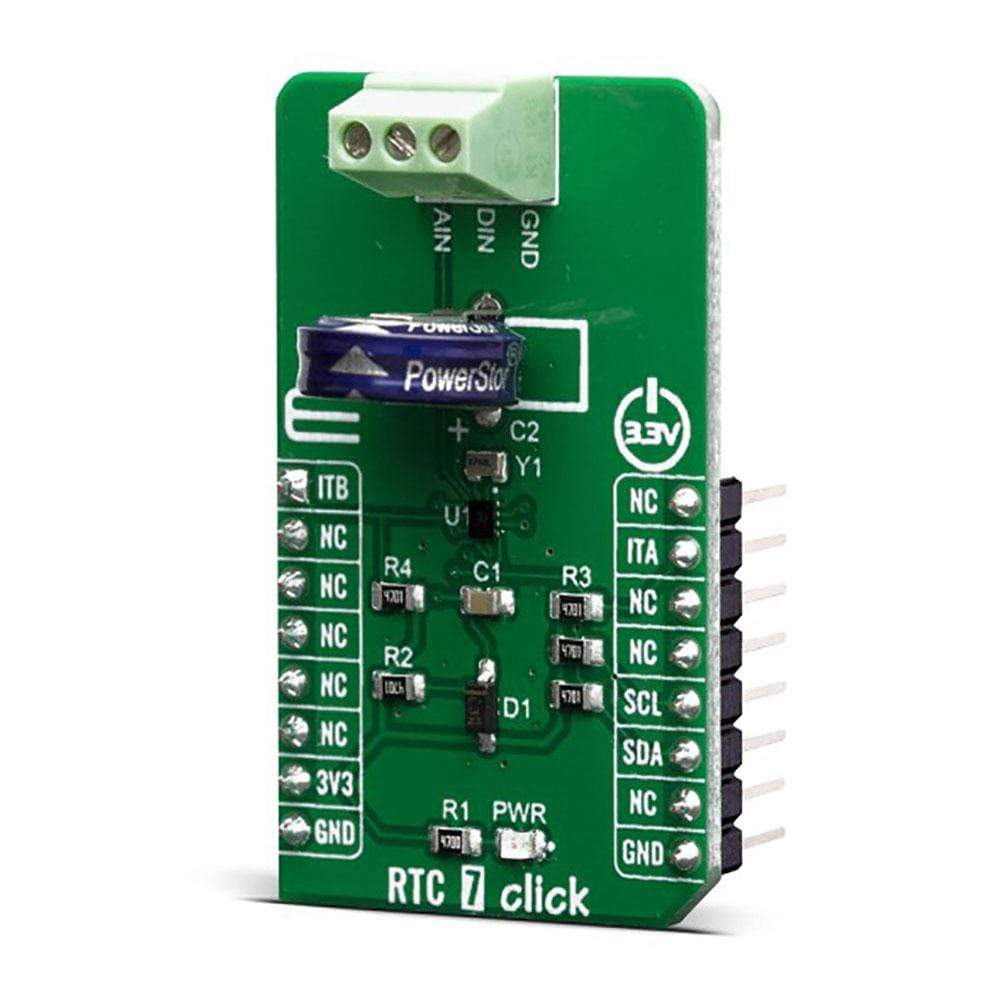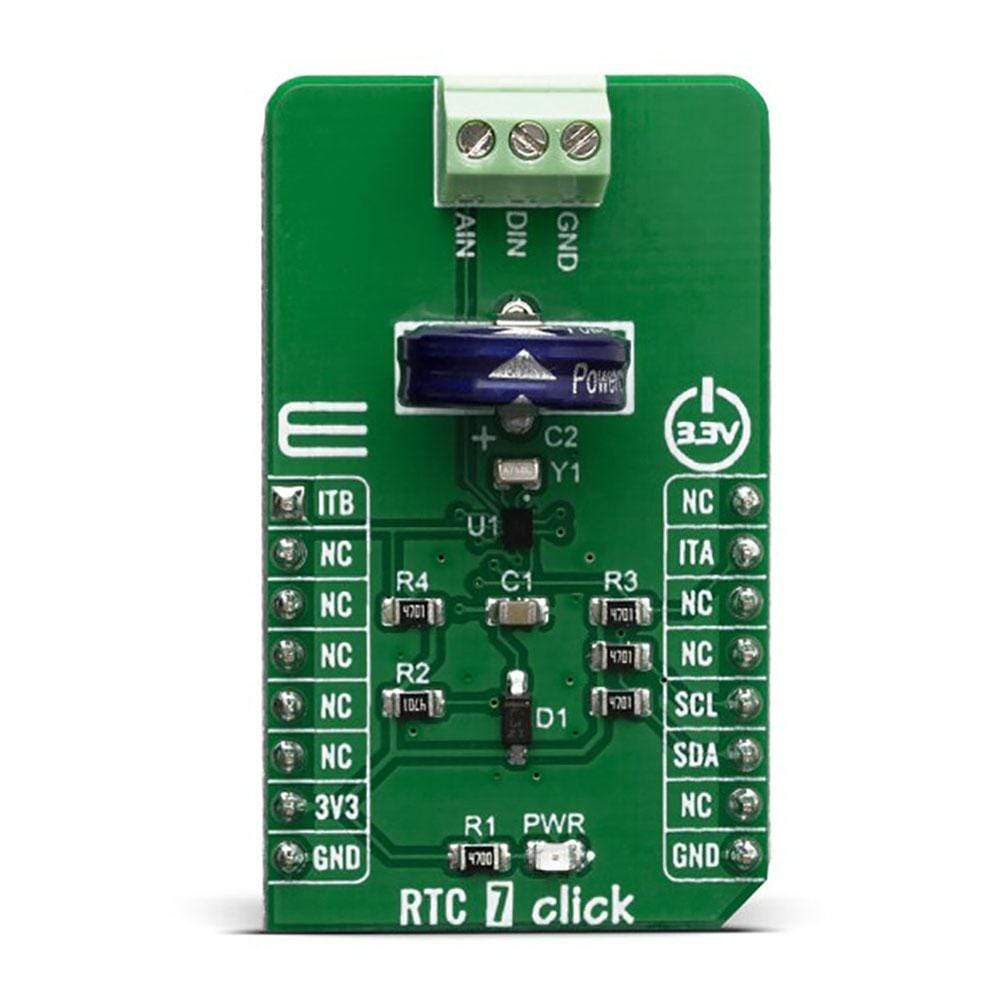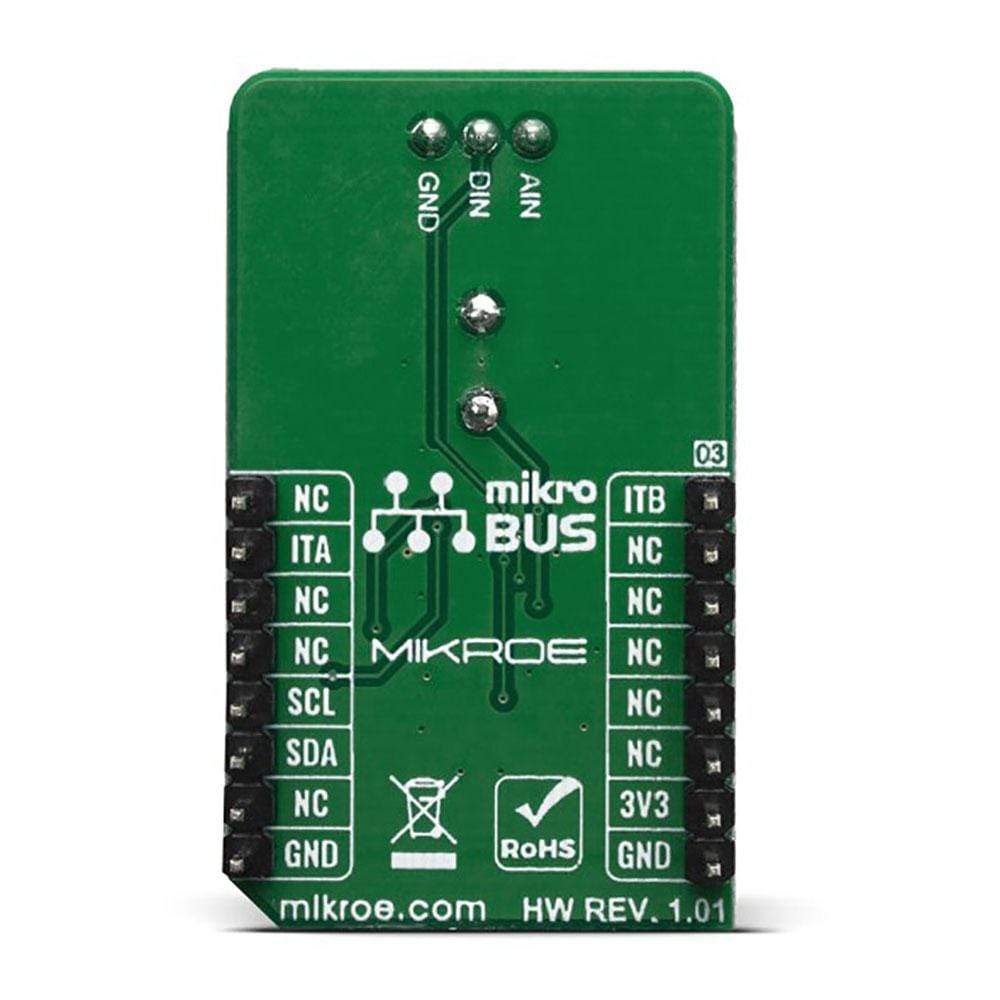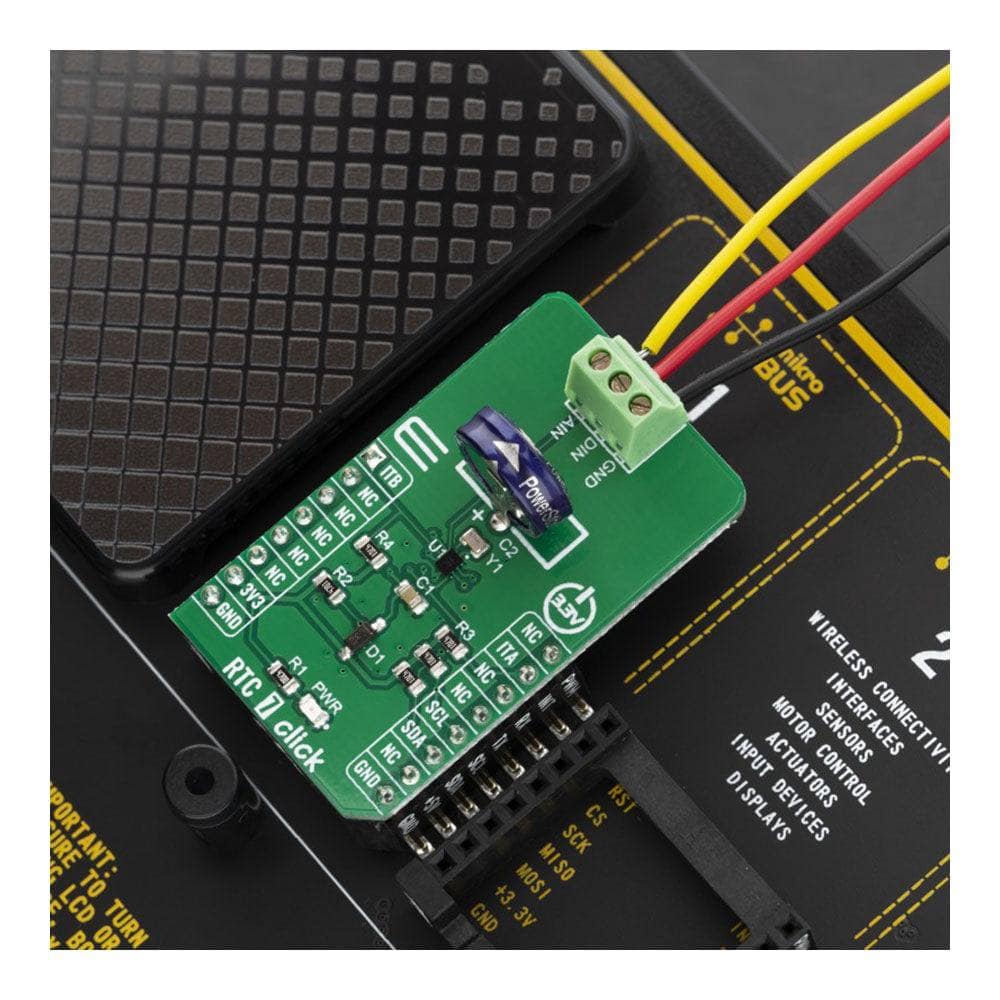



Overview
The RTC 7 Click Board™ is a real-time clock module that has an extremely low power consumption, allowing it to be used with a single button cell battery or a supercapacitor, for an extended period of time. The MAX31341B IC built on the RTC 7 Click Board™ is able to output the time in the binary-coded decimal (BCD) format. Integrated, factory calibrated XTAL operating at 32.768 kHz ensures a very low time deviation.
However, the RTC 7 Click Board™ has the onboard external, more precise crystal oscillator too. An advanced interrupt feature allows many different uses such as alarm function, countdown timer function, external event detection function, using analogue and digital inputs and much more.
Downloads
Das RTC 7 Click Board™ ist ein Echtzeituhrmodul mit extrem niedrigem Stromverbrauch, sodass es über einen längeren Zeitraum mit einer einzelnen Knopfzellenbatterie oder einem Superkondensator verwendet werden kann. Der auf dem RTC 7 Click Board™ integrierte IC MAX31341B kann die Zeit im binär codierten Dezimalformat (BCD) ausgeben. Integriertes, werkseitig kalibriertes XTAL mit 32,768 kHz sorgt für eine sehr geringe Zeitabweichung.
Das RTC 7 Click Board™ verfügt jedoch auch über einen integrierten externen, präziseren Quarzoszillator. Eine erweiterte Interrupt-Funktion ermöglicht viele verschiedene Verwendungsmöglichkeiten wie Alarmfunktion, Countdown-Timer-Funktion, externe Ereigniserkennungsfunktion, Verwendung analoger und digitaler Eingänge und vieles mehr.
| General Information | |
|---|---|
Part Number (SKU) |
MIKROE-2976
|
Manufacturer |
|
| Physical and Mechanical | |
Weight |
0.02 kg
|
| Other | |
Country of Origin |
|
HS Code Customs Tariff code
|
|
EAN |
8606018716661
|
Warranty |
|
Frequently Asked Questions
Have a Question?
Be the first to ask a question about this.




